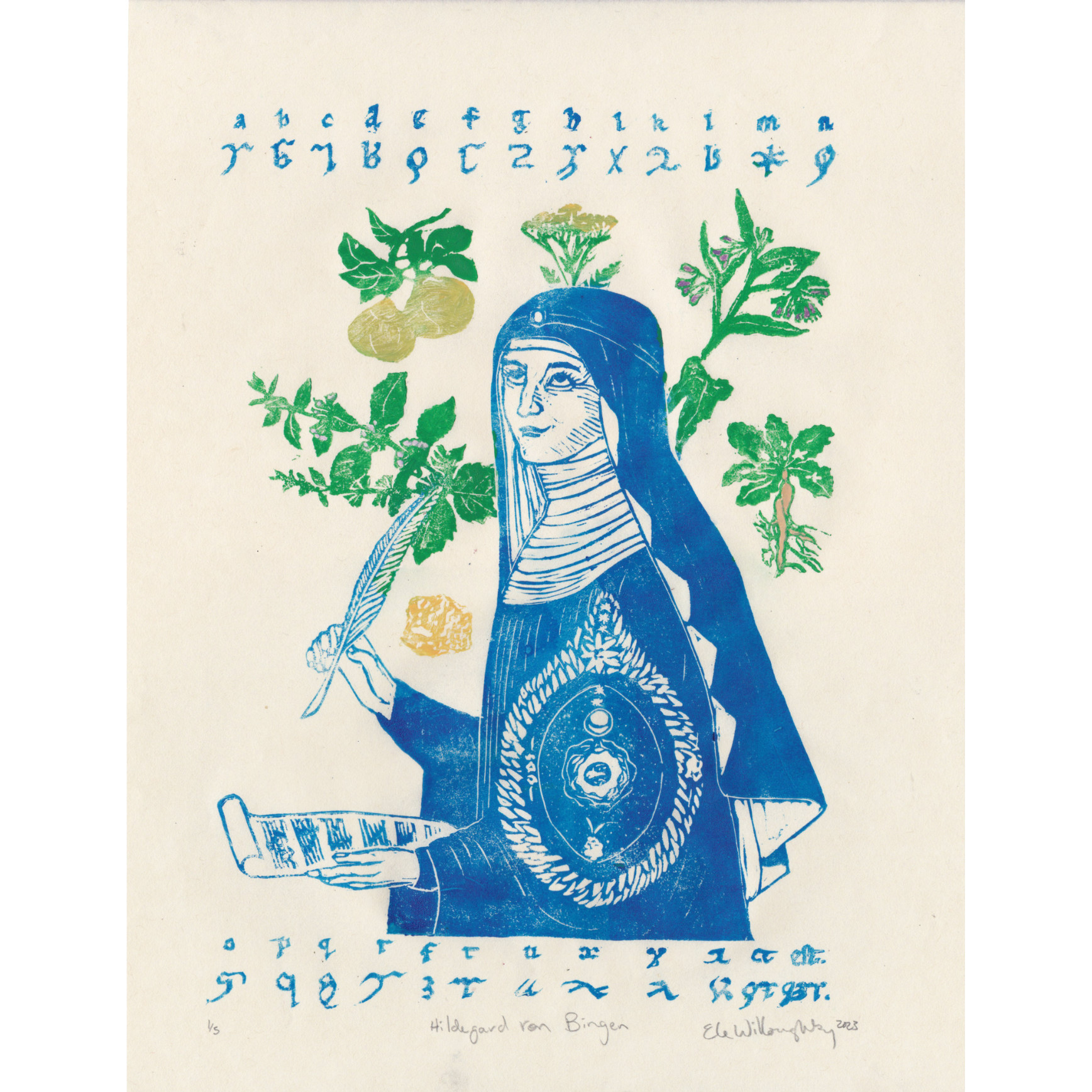Happy birthday to Hildegard von Bingen (1098-1179), here surrounded by plants & a mineral she touted as medical treatments, her invented alphabet & model of the universe. One of my most popular prints this year!
Her writings preserve not only her own knowledge & theories but the nature of institutional #medicine & folk healing of her day (which she deftly combined). While she might be best remembered today as a composer …
🧵1/n
#printmaking#womenInSTEM#histSci#histMed #botany#MastoArt
